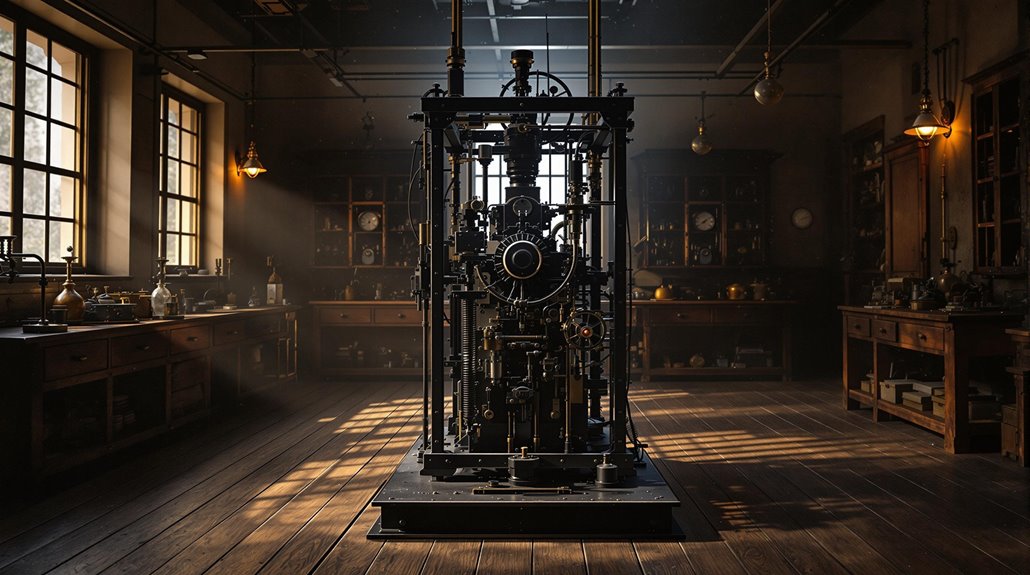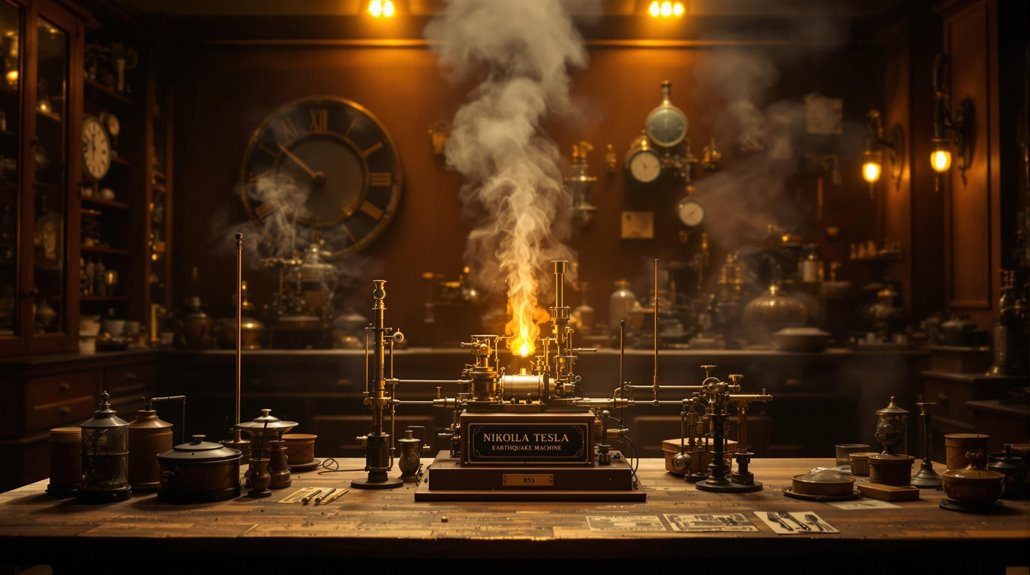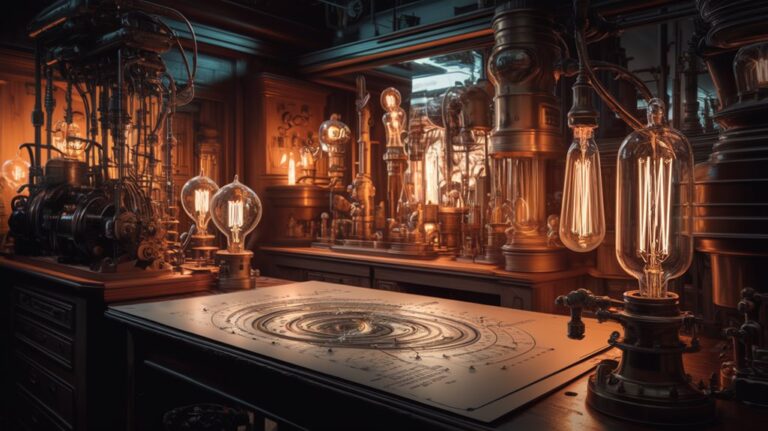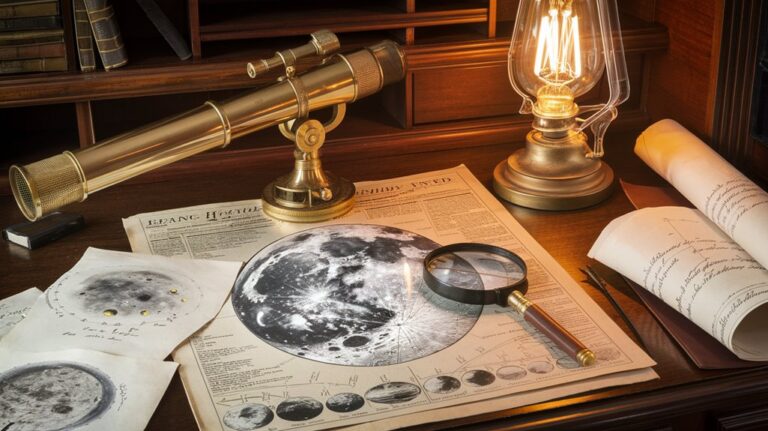Nikola Tesla’s “Earthquake Machine”: The Legend of the Lab That Shook New York
You've probably heard wild tales about mad scientists and their world-altering inventions, but Nikola Tesla's "Earthquake Machine" stands out as more than just another urban legend. In 1893, this small mechanical oscillator allegedly sent tremors through several New York City blocks, causing panic among local residents and forcing Tesla to destroy his own creation with a sledgehammer. While skeptics question the machine's reported power, the science behind Tesla's experiment continues to influence modern engineering and raises intriguing questions about resonance technology's true potential.
The Birth of Tesla's Mechanical Oscillator
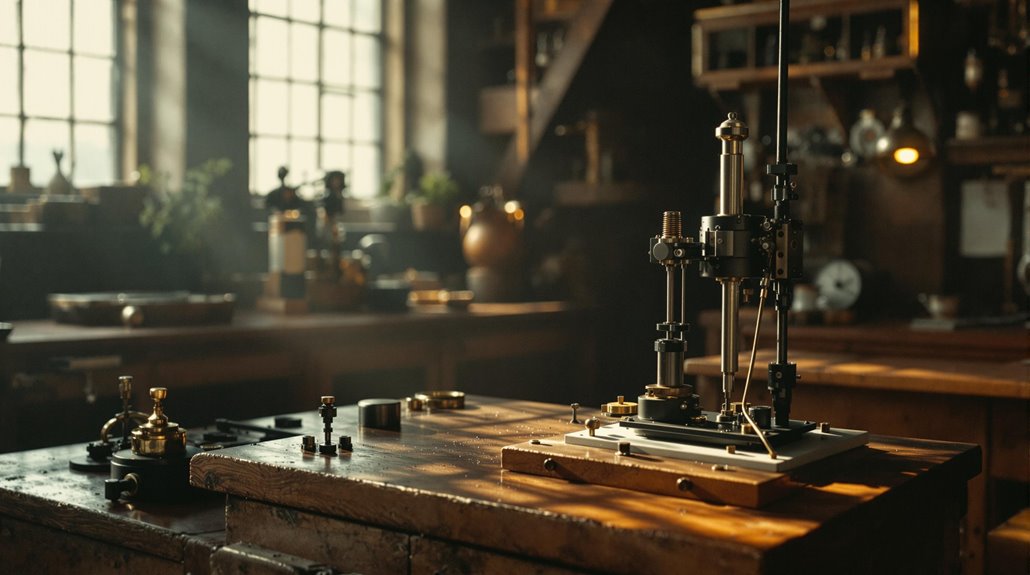
Innovation struck in 1893 when Nikola Tesla patented his mechanical oscillator, a steam-powered electric generator that promised to revolutionize power generation.
You'll find that Tesla's oscillator design was remarkably different from the inefficient reciprocating steam engines of his era, as it harnessed mechanical vibration to produce constant frequency alternating current.
The device's core mechanism featured a reciprocating piston attached to an armature, with steam forced through ports to drive the piston's movement.
What made it truly groundbreaking was its ability to withstand extreme conditions – the upper chamber could handle pressures up to 400 psi and temperatures reaching 200°C.
Later variants of the device incorporated air as spring and electromagnetic controls to regulate frequency output.
By 1898, the oscillator's power became evident when Tesla shook his laboratory during a demonstration of the device's capabilities.
Tesla's creation wasn't just about power generation; he'd also envisioned its use in high-frequency electrical experiments and wireless transmission technology.
The Famous 1898 Houston Street Experiment
One of history's most intriguing scientific legends emerged from Tesla's Houston Street laboratory in 1898, where his small mechanical oscillator allegedly triggered panic in Manhattan's SoHo neighborhood.
According to Tesla's later accounts, his experiments with a seven-inch, two-pound device created vibrations that shook surrounding buildings and sparked chaos in the streets.
You'll find it fascinating that neighbors reportedly complained about strange noises, while police and ambulances rushed to the scene.
The device utilized an innovative piston and cylinder mechanism that could generate powerful vibrations with minimal energy input.
Located on the upper two floors of a seven-story building, the laboratory provided an ideal setting for Tesla's controversial experiments.
Tesla claimed he'd to destroy the device with a hammer to stop the chaos, instructing his assistants to blame an earthquake.
However, you should know there's significant skepticism surrounding this tale.
No contemporary news reports or official records support Tesla's story, which he first shared decades after the alleged incident.
Understanding the Science of Resonance
To understand Tesla's "earthquake machine," we must first grasp the fundamental physics of resonance. When an object receives periodic force at its natural frequency, it creates increasingly larger vibrations – a phenomenon known as resonance.
It's like pushing a child on a swing: if you time your pushes perfectly, the swing goes higher and higher. Maximum amplitude occurs when these pushes match the swing's natural motion.
This principle has countless resonance applications, from musical instruments to modern MRI machines. Nuclear magnetic resonance powers these medical imaging devices through quantum-level oscillations.
What makes resonance particularly powerful is that small, well-timed forces can create massive oscillations. That's exactly what Tesla aimed to exploit.
However, the challenge lies in amplitude control – without proper damping, resonant vibrations can grow dangerously large.
Just as resonance can help create beautiful music, it can also potentially destroy bridges or buildings if left unchecked.
Separating Fact From Fiction: Tesla's Bold Claims
While Nikola Tesla's "earthquake machine" captured public imagination, separating historical fact from dramatic storytelling remains challenging. Through careful myth debunking and historical context analysis, you'll find significant discrepancies in Tesla's accounts of the infamous oscillator incident.
Consider these key points when examining Tesla's claims:
- Multiple versions of the story exist, with varying locations and details that don't align.
- No documented evidence supports an actual "earthquake" occurring in New York City.
- Scientific testing, including MythBusters' experiments, suggests the device couldn't generate claimed effects.
- Tesla's mathematical limitations may have led him to overestimate the machine's potential.
The device operated using a simple design of steam or air to generate vibrations, far less complex than the dramatic effects suggested in Tesla's stories.
While Tesla's oscillator likely generated high-frequency vibrations, the dramatic tales of building-shaking events appear more rooted in showmanship than scientific reality. Modern engineering studies have since proven that artificial resonance alone cannot trigger significant seismic activity.
Modern Physics and the Legacy of the "Earthquake Machine"
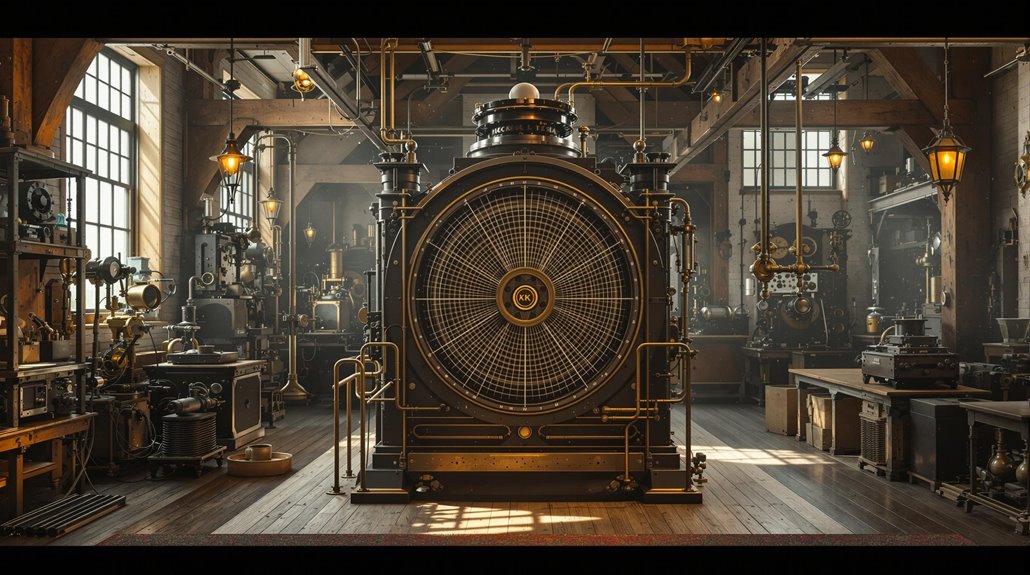
Although Tesla's earthquake machine never achieved its sensational claims, its underlying principles continue to influence modern physics and engineering applications.
From classical mechanics to quantum vibrations, we now understand how resonance and mechanical oscillation convert energy between different forms.
You'll find Tesla's core concepts at work in today's vibration-based technologies, from energy harvesting systems to structural health monitoring.
 police visits to his laboratory.
police visits to his laboratory.
Modern seismologists use controlled vibrations for underground mapping, and engineers employ resonance in ultrasonic cleaning and telecommunications devices.
The scientific principles behind Tesla's oscillator – though not earthquake-inducing – have contributed to our understanding of mechanical systems and inspired innovations in vibration isolation and acoustic wave technology.
His experiments at Colorado Springs Laboratory demonstrated the most dramatic applications of these resonance principles, producing spectacular electrical displays that pushed the boundaries of scientific understanding.

